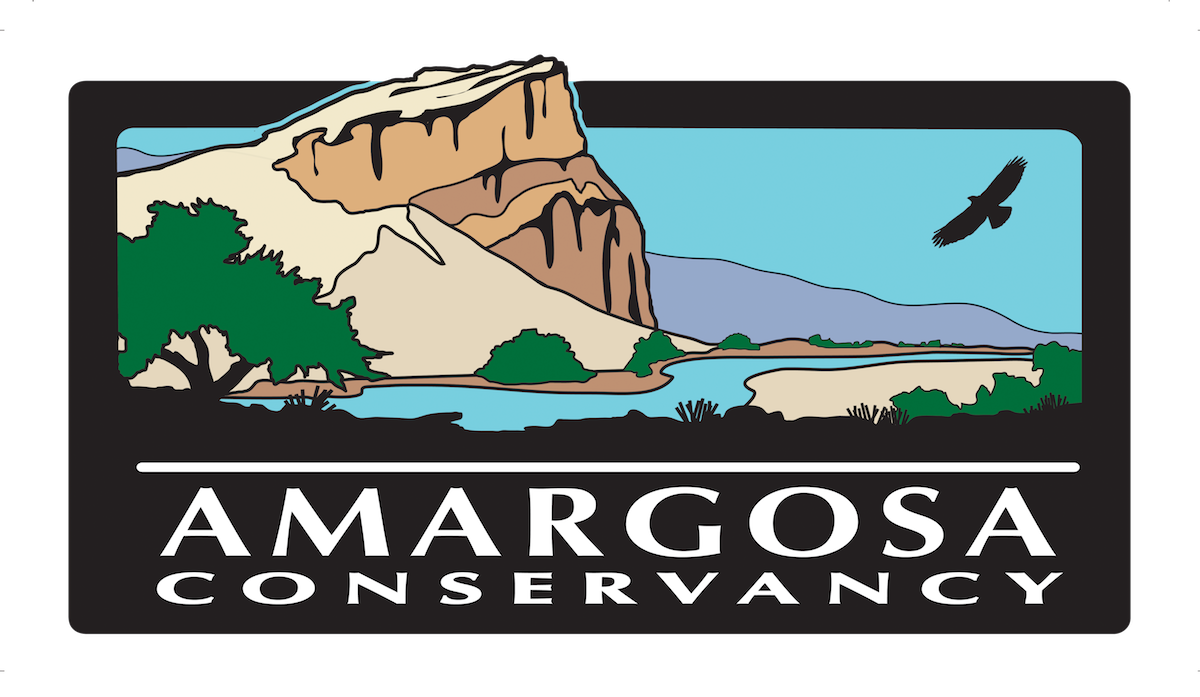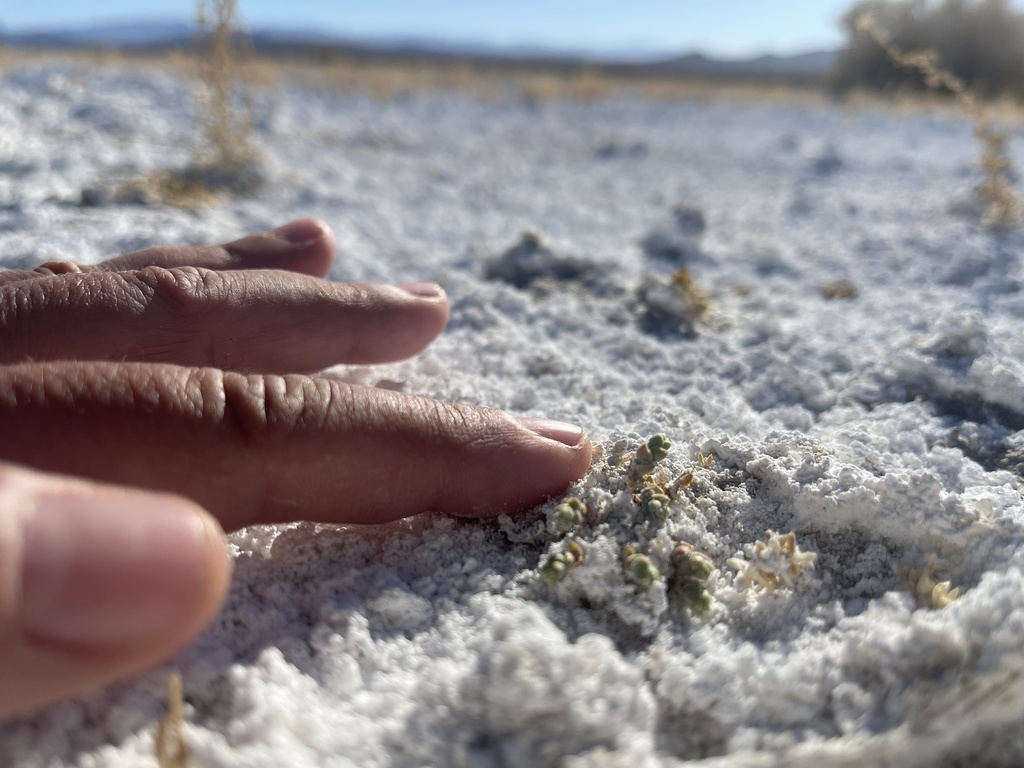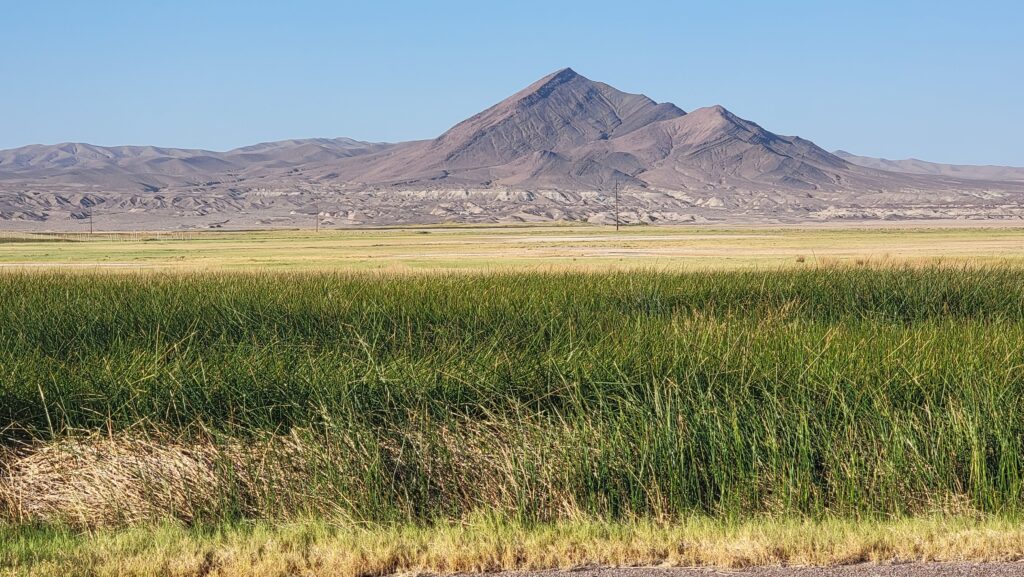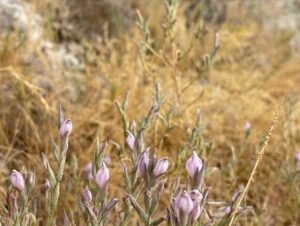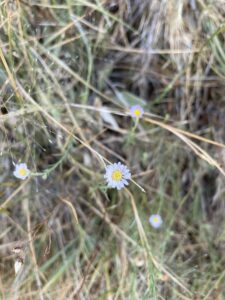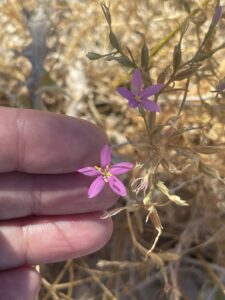by Naomi Fraga Amargosa Conservancy Board Treasurer Director of Conservation Programs, California Botanic Garden
The Amargosa Basin is globally renowned among desert locations for its unique and rich biodiversity. Across the length of this “hide and seek” river, we find that the majority of rare plants are located at wetland locations where the water finds the surface at seeps, springs, meadows and muddy salt flats. These wetland habitats support a suite of unique plant species, many of them restricted to the Amargosa Basin and occurring no other place in the world. Tecopa is one such place where the river comes to the surface in a series of hot springs whose outflows support marshlands and mudflats.
Just outside of the reaches of the bullrush marsh, otherwise known as the home of the Amargosa vole, you will find the Tecopa bird’s beak (Chloropyron tecopense) and the marsh aster (Almutaster pauciflorus), two purple flowered plants that rely on the rivers waters. These two species thrive in the alkaline condition the river provides and they are an important component of the marsh community. In addition to the three-square bulrush which forms the structural basis of the marsh, these two rare plants are vital components of this vibrant ecosystem that supports endangered wildlife like the Amargosa vole. Supporting the entirety of the marsh community ensures that all components rare and common can be conserved.
The Amargosa niterwort (Nitrophila mohavensis) is one of the most endangered species in the Amargosa Basin, and it lives in the salty mudflats of Tecopa. With its small stature, being only two or three inches tall, this delicate succulent has been seldom seen by botanists of the past. It was “discovered” as occurring in Tecopa in 1986, 31 years after it was initially described as a species. Monitoring efforts for the Amargosa niterwort are actively ramping up in Tecopa to support the dwindling populations which have been highly impacted by hot spring recreation. Now that the Tecopa population of the Amargosa niterwort is on the radar of conservationists and land managers, it is my hope that this species will see a resurgence in its unique home along the river.
The spring loving centaury (Zeltnera namophila) is historically known to occur in Tecopa, but it has not been seen since 1965. Recent surveys have not been successful in re-locating it, although there is potential habitat and more surveys are needed. It may very well be that this species is now extirpated, or has become locally extinct due to habitat loss or alteration. Continued surveys along the river are essential to supporting the rare plants of Tecopa, because conditions can change rapidly and understanding the status of these species is essential to their survival.
The rare plants of the Amargosa Basin are a unique treasure to behold. They signify a past climate when Lake Tecopa was full and the river flowed perennially across its length above ground, and they are examples of resilience in a changing climate. These plants have lived here for thousands of years, so ensuring the Tecopa bird’s beak, marsh aster, spring-loving centaury and Amargosa niterwort have a home in Tecopa beyond our own years is the least bit we can do as stewards and co-inhabitants of the landscape. The Amargosa Conservancy is monitoring marsh habitat in this area in partnership with the California Department of Fish and Wildlife. By supporting the Amargosa Conservancy you are supporting activities that are essential to the long term conservation of rare species and unique habitats.
Ready to take a stand for these wonderful and unique desert beauties? Support the Amargosa Conservancy by donating today!
